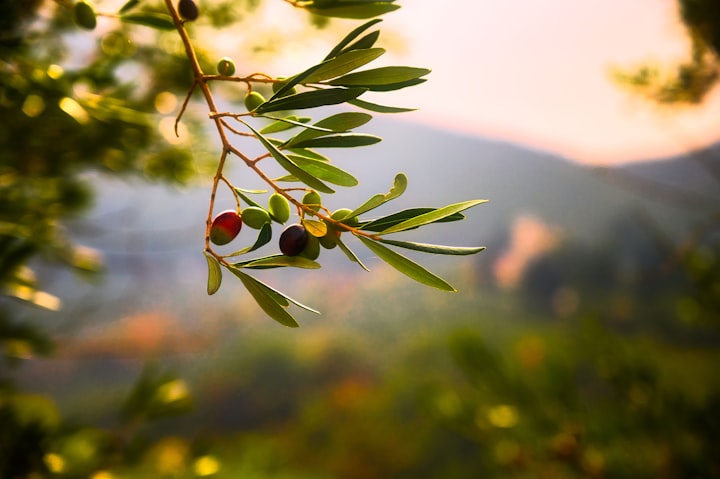
One of the healthiest and most delicious cooking oils is extra virgin olive oil. It is removed mechanically from the olive tree's fruit without the aid of heat or chemicals. The outcome is a high-quality oil that is flavourful and rich in beneficial nutrients.
In this post, we'll examine extra virgin olive oil production in further detail, from the olives' harvest to the oil's bottling.
Harvesting of Olives
The first step in producing extra virgin olive oil is to harvest the olives from the trees. Olives are typically harvested in the fall, from October to December, when they are fully ripened. They are picked either by hand or by using mechanical harvesters.
Handpicking is the traditional method of olive harvesting and is still used today in many small-scale production facilities. Workers use handheld rakes or combs to remove the olives from the trees and place them in baskets. This method is slower and more labour-intensive than mechanical harvesting, but it ensures that the olives are not damaged during the harvesting process.
Mechanical harvesting, on the other hand, is a faster and more efficient method of harvesting olives. This process involves the use of machines that shake the branches of the olive tree, causing the olives to fall onto nets that have been spread out on the ground beneath the tree. The olives are then collected and transported to the olive mill for processing.
Sorting and Washing the Olives
Harvested olives are then sorted to remove any leaves, twigs, or other debris. This is usually done using a machine that separates the olives from the leaves and other unwanted materials.
After sorting, the olives are washed to remove any dirt or dust. This is typically done using water or a combination of water and air. The olives are then dried using a machine that removes excess moisture and prepares them for milling.
Milling the Olives
The milling process is the most important step in producing extra virgin olive oil. It involves crushing the olives to release the oil, which is then separated from the other components of the fruit, such as the skin and pulp.
Traditionally, olives were crushed using large stone mills, which are still used in some small-scale production facilities. Today, most olive mills use modern mechanical crushers, which are faster and more efficient than stone mills.
The crushing process begins by passing the olives through a machine called a hammer mill, which breaks the olives into small pieces. The crushed olives are then placed in a machine called a malaxer, which mixes the olive paste and helps to release the oil from the cells of the fruit.
After the malaxation process, the olive paste is transferred to a machine called a centrifuge, which separates the oil from the other components of the paste. The centrifuge spins the paste at high speed, causing the oil to separate from the water and solids. The resulting oil is then filtered to remove any remaining water or impurities.
Bottling and Storage
After the oil has been extracted and filtered, it is ready to be bottled and stored. Most extra virgin olive oil is bottled in dark glass bottles, which help to protect the oil from light and air, both of which can cause the oil to spoil.
Before bottling, the oil is usually tested to ensure that it meets the strict standards for extra virgin olive oil (EVOO). These standards, set by the International Olive Council, require that the oil be produced using only mechanical means, have no more than 0.8% free fatty acidity, a peroxide value of no more than 11 milliequivalent/kg, and meet strict sensory standards for flavour and aroma. You can learn more about these for better EVOO appreciation at an olive oil tasting class near you.
Once the oil has been bottled, it is stored in a cool, dark place to protect it from heat and light, which can cause the oil to degrade.
To sum up, the production of extra virgin olive oil is a complex and intricate process that involves careful attention to detail at every step. With its numerous health benefits and delicious flavour, this ingredient has become a staple in kitchens around the world. By understanding how it's made, we can appreciate the artistry and skill behind this culinary treasure and make informed choices when selecting and using olive oil in our cooking.





Comments
Daz Low is not accepting comments at the moment
Want to show your support? Send them a one-off tip.